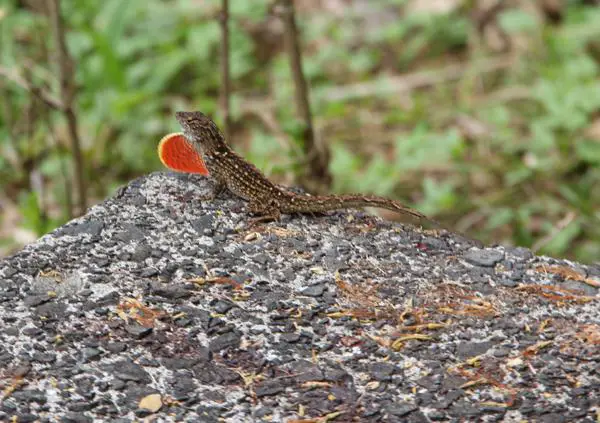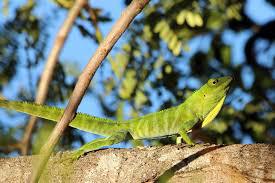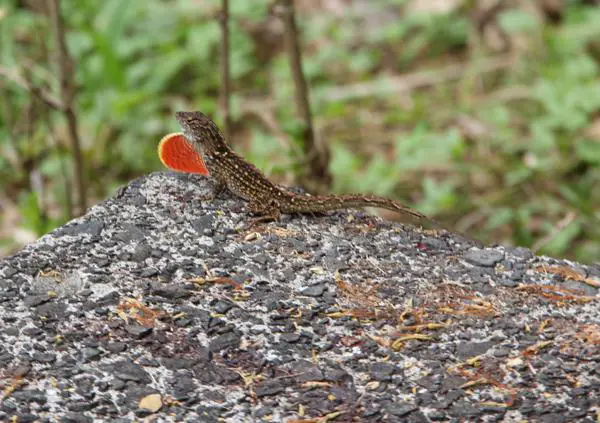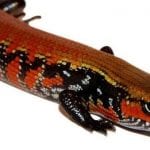People who want to venture out to a life of taking care of exotic pets have a wide variety of different types of lizards to choose from. While exotic lizards tend to have different care requirements and demands when it comes to how you should take care of them, they tend to be rewarding creatures to care for, especially if you do things right and if you choose the right type of pet reptile.
In that regard, Anoles tend to be some of the more popular choices for different exotic pet owners out there. These reptiles are well-loved in the exotic pet world because of their appearance and their overall demeanor as pets. That said, there is certainly more than one type of anole out there, and it can be hard to choose which among them is the best for you.
We have put together a guide on how to choose the best type of Anole for you, depending on what you need and on what best fits your preferences.
Get to Know More About the Anole
General Information
Anoles, which are grouped under the genus Anolis, belong to iguana group of lizards that can commonly be found in places all over America regardless of whether North or South. There are about 250 different species of anoles, which are known to be tree-dwelling lizards. Anoles may be found all over America, but they are most likely to stay in places with warmer climates.
Known to be great climbers, Anoles are most commonly found dwelling on trees, branches, and other elevated places. They can even climb smooth vertical surfaces at really great speeds. Anoles may also be considered as venomous lizards even though their venom is not potent enough to do a lot of harm.
Appearance
Anoles vary in appearance depending on the subspecies. However, they are generally moderate in terms of size and are most likely going to be 12 to 16 inches long, depending on the subspecies. However, there are subspecies of Anoles that are only half as small as the usual Anole. There are also those that are about 50% bigger than the normal Anole size.
Another thing that is usually common in most Anoles is that the males have large throats that are otherwise called as dewlaps. The purpose of the dewlap is for the male to signal its territory and for it to attract potential mates whenever it is mating season.
While their color varies depending on the type of Anole, these lizards are usually pre-dominantly green in terms of their color. There will be some that are brownish, while others have a brighter shade of green. It really just depends on what kind of Anole you want. And because Anoles can change colors, it may be difficult for you to pinpoint the exact color of a certain Anole.
Eating Habits
Anoles are known to be voracious carnivores that will almost never refuse a meal. They are insectivores that will only most likely eat insects due to how they easily fit inside the Anole’s mouth. However, bigger Anoles might be able to eat small mice as long as they can fit inside their mouths. But the general rule is that an Anole is an insectivore that will hunt for insects in the wild and will only accept insects as food when kept in captivity.
If you happen to own an Anole, the one thing that you should know when it comes to feeding them is that they almost never eat prey that is not moving. That means that the best way to feed them is to make sure to provide them with live insects that are moving. Most Anoles do well on a diet that is composed mainly of crickets, mealworms, or similar insects. The rule here is that the lizard’s food should be small enough to fit the mouth of the Anole.
Behavior and Temperament
Anoles are known to be arboreal reptiles that will spend the majority of their time on top of trees. They are adept climbers that can easily climb smooth surfaces and are actually very agile when it comes to climbing.
Another known behavior that is common in a lot of Anole species is that they can blend in with their surroundings, just like how a chameleon does. That has earned them the title as the American Chameleon, but they are not as adept at changing colors as chameleons are. They are not even true chameleons.
Male Anoles are known to be very territorial and will fight other males that encroach their territory. One way that Anoles use to mark their territory is to inflate their dewlaps whenever another male tries to encroach on their territory. They also try to impress females using their dewlaps.
Both in the wild and in captivity, Anoles can drop their tails if they feel like they are threatened by something they perceive as a predator. They usually leave their tails behind to escape from a potential threat. They can regrow their tails, but they will not end up looking like the original. That is why it is not advised that you hold the Anole by the tail as it can easily drop it.
That said, Anoles tend to be very shy animals and are most likely going to try to save their skin whenever they feel threatened. They can be skittish at times regardless of whether they are wild-caught or captive-bred, although the former tend to be a lot shyer and more skittish compared to the latter.
Common Health Problems
When it comes to the common health problems that Anoles face, they are similar to any kind of lizard in the sense that they are susceptible to metabolic bone disease, which is a result of how they follow a type of diet that is low in calcium and how they usually lack exposure to ultraviolet B-rich sunlight. In that case, most owners remedy this problem by dusting insects with a calcium supplement or by providing the lizard with a UVB lamp inside its enclosure.
Another health problem that Anoles commonly face is mouth rot or stomatitis. Whenever you notice that there is an unusual puffiness around the mouth are of the Anole or whenever you notice that there is a cheese-like rot inside its mouth, then that must be stomatitis. This can be a serious health problem if left untreated. Treatment must be done by a professional, or else it might lead to jaw problems or even death.
Popular Types of Anoles
Green Anole
Green Anoles might be the most well-known and most popular type of Anole around. This reptile is around 8 inches long and seldom grows to more than that. These are agile and muscular Anoles that are quite adept at climbing different types of surfaces. They are also considered beginner-level Anoles because of how comparatively easy they are to take care of even if you do not have a lot of experience in taking care of exotic pets and reptiles. They are easy to the house because of their relatively small size, and they are also quite easy to feed due to how they are receptive to any kind of insect that is small enough to fit their mouths.
As much as possible, try to isolate male Green Anoles because of how territorial they tend to be. Never house your females with more than one male Green Anole. Also, they tend to be quite shy because of how small they are and how easy they are to fall prey to bigger reptiles in the wild.
If you want a relatively affordable and easy Anole to take care of and acquire, the Green Anole is a good choice. It also tends to be just as appealing as most other types of Anoles but may not be the most aesthetically pleasing when compared to the other elegant-looking types.
Brown Anole

If you think that Green Anoles are already small, Brown Anoles are smaller. These Anoles usually are only about 6 inches long and almost never grow longer than that. Meanwhile, they have bodies that are chocolate brown or light brown in terms of color instead of the usual green you see in most Anoles.
When housing a Brown Anole, use plenty of wood-like decorations and furnishings for it to use as a spot to stay on or to hide under. That is because they tend to have a brownish type of color to make it easier for them to blend with wood-like objects that are also brown. Other than that, another thing to take note of is that Brown Anoles require to be housed in an enclosure that has a higher humidity level.
Brown Anoles tend to be the most affordable types of Anoles because other than the fact that they are considered not as appealing as other Anoles due to their color, they are also used for larger reptiles that tower over them. So if you are low on budget and if you are looking for an Anole that is cheap and quite easy to take care of, a Brown Anole might be good for you.
Knight Anole
The Knight Anole, which hails from Cuba, is the largest type of Anole in the world. It usually grows to about 18 or more inches, and it easily dwarfs the other Anole types due to how large it is. But, just like any other type of Anole, the Knight Anole likes staying on large trees that allow it to hide. It is still very much arboreal in terms of its overall behavior and can be quite common in Florida.
Knight Anoles may be large and very pleasing to the eyes due to how big they are. However, the problem with these reptiles is that they can be very slow to adapt to captive conditions and may not even adapt at all. In that sense, most owners prefer to buy smaller and younger Knight Anoles because the chances of them adapting to life under captive-care tend to be higher than the large adults.
While the Knight Anole might be known for being a carnivore that can feed on insects and even small mice because of its large size, the good thing about it is that it is also omnivorous in the sense that it can eat a wide variety of fruits. This allows it to be a bit more versatile compared to the other types of Anoles. However, because they are larger than the other Anoles, they are more likely to bite whenever they feel threatened.
Jamaican Giant Anole

Many consider the Jamaican Giant Anole to be the most aesthetically pleasing out of all the types of Anoles. This Anole has a very elegant emerald green color that can easily catch the attention of any spectator. They also have a row of spines that start from the skull and continues all the way to the middle portion of the back. Moreover, they are large, robust, and heavier than most other Anole species, although they might not be as big as the Knight Anole.
The problem with the Jamaican Giant Anole, however, is that it is only for those who are willing to spend. They might be aesthetically pleasing, but they will hurt your bank account since they cost somewhere between $50 and $75. As such, it might not be the best for those who can only afford its smaller and cheaper counterparts.



